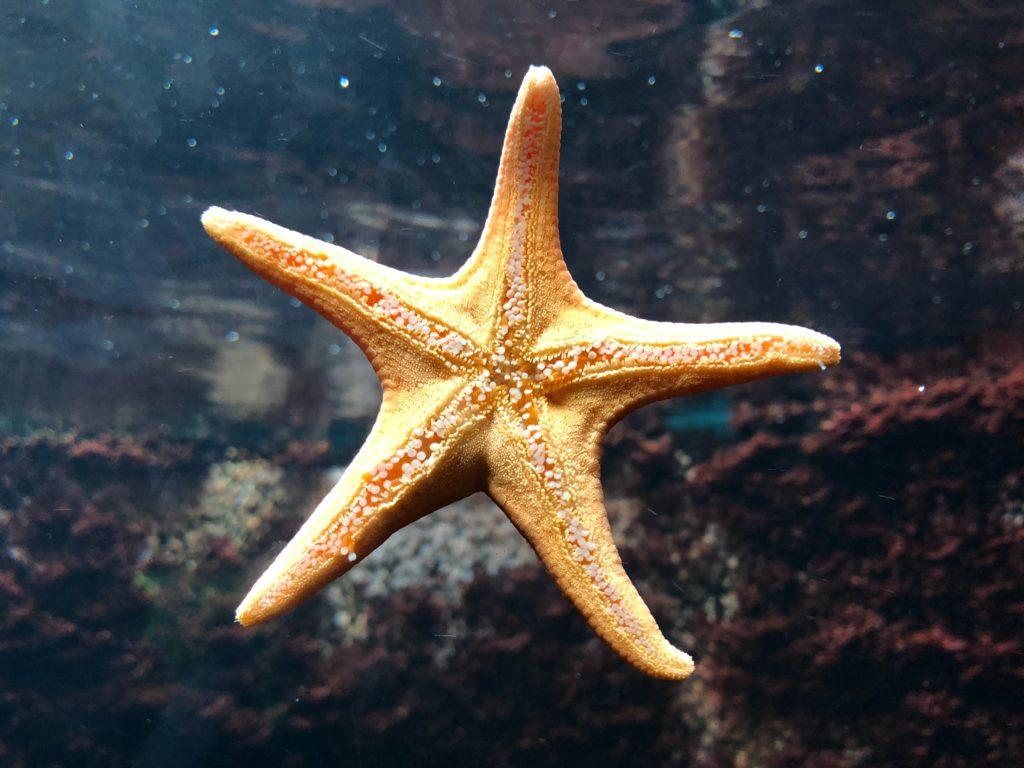When you have been around a long-time you know your stuff.
Anonymous
A chance discovery of a beautifully preserved fossil in the desert landscape of Morocco has solved one of the great mysteries of biology and palaeontology: how starfish evolved their arms.
Starfish are one of the most recognisable animals on our planet. Most people probably associate them with trips to the beach, walking in rock pools or swimming in the sea. They might appear simple creatures, but the way these animals’ distinctive biology evolved was, until recently, unknown.
Our new study, published in the journal Biology Letters, sheds light on how the starfish developed its distinctive shape.
The mystery of starfish
Starfish, and their close relatives the brittle stars, belong to a group called the echinoderms. These are animals with spiny skins, including sea urchins, sea lilies and sea cucumbers, with bizarre biological traits. They have no head or a brain, and have a unique circulatory system called a water vascular system, which uses seawater instead of blood. They even possess the power to regenerate over 75% of their body mass if it is lost.
Starfish have almost always had the same five-armed body shape. This has not changed for almost 480 million years, throughout the five great mass extinctions they survived.
Other echinoderms use their arms to filter feed or catch food from the water and, unlike starfish, face upwards with their arms spreading outward to feed. But starfish do not, and their distinctive body shape appeared in the fossil record fully formed. So for years, scientists have been perplexed by how it evolved and how starfish are related to their close relatives, the brittle stars.
Although starfish might appear very robust animals, they are typically made up of lots of hard parts attached by ligaments and soft tissue which, upon death, quickly degrade. This means we rely on places like the Fezouata formations to provide snapshots of their evolution.
The starfish fossil record is patchy, especially at the critical time when many of these animal groups first appeared. Sorting out how each of the various types of ancient starfish relate to each other is like putting a puzzle together when many of the parts are missing.
The oldest starfish
Cantabrigiaster is the most primitive starfish-like animal to be discovered in the fossil record. It was discovered in 2003, but it has taken over 17 years to work out its true significance.

What makes Cantabrigiaster unique is that it lacks almost all the characteristics we find in brittle stars and starfish.
Starfish and brittle stars belong to the family Asterozoa. Their ancestors, the Somasteroids were especially fragile – before Cantabrigiaster we only had a handful of specimens. The celebrated Moroccan palaeontologist Mohamed Ben Moula and his local team was instrumental in discovering these amazing fossils near the town of Zagora, in Morocco.
The breakthrough
Our breakthrough moment came when I compared the arms of Cantabrigiaster with those of modern sea lilies, filter feeders with long feathery arms that tend to be attached to the seafloor by a stem or stalk.
The striking similarity between these modern filter feeders and the ancient starfish led our team from the University of Cambridge and Harvard University to create a new analysis. We applied a biological model to the features of all the current early Asterozoa fossils in existence, along with a sample of their closest relatives.
Cantabrigiaster is the most primitive starfish-like animal to be discovered in the fossil record. Aaron Hunter, Author provided
Our results demonstrate Cantabrigiaster is the most primitive of all the Asterozoa, and most likely evolved from ancient animals called crinoids that lived 250 million years before dinosaurs. The five arms of starfish are a relic left over from these ancestors. In the case of Cantabrigiaster, and its starfish descendants, it evolved by flipping upside-down so its arms are face down on the sediment to feed.
Contact us in confidence by completing our secure contact form

Alternatively, call us direct on 01243-607357 or email [email protected]


